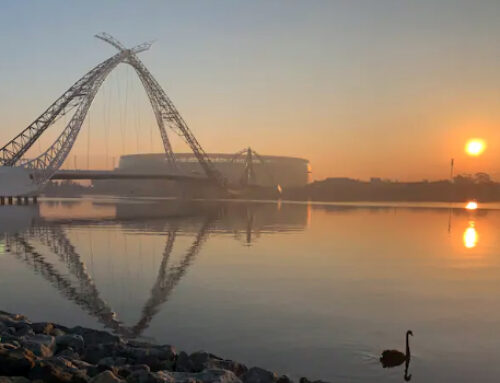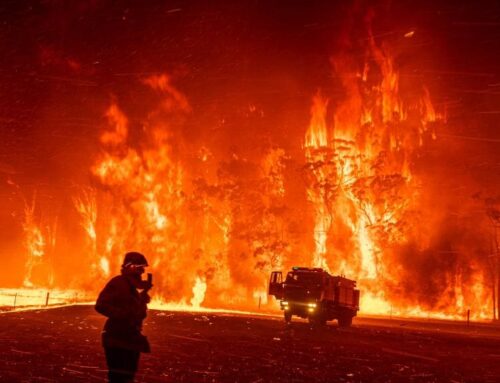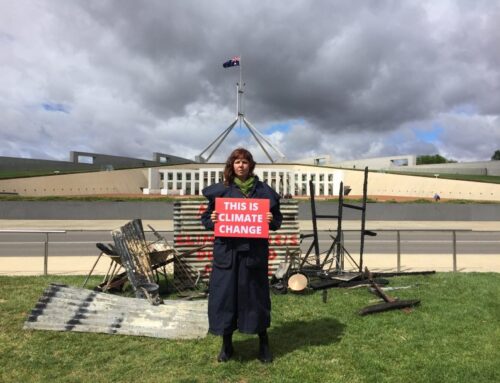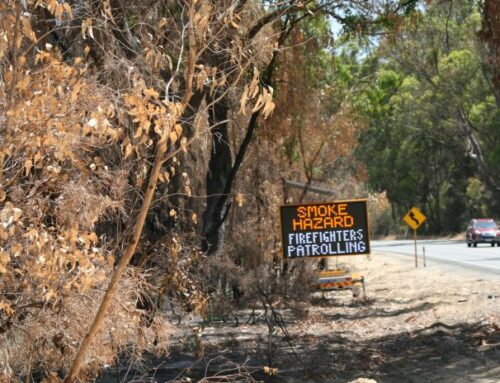Smoke from the Black Summer bushfires killed nearly 450 people and affected 80 per cent of the population, health experts have told a royal commission hearing.
The commission, which is looking into Australia’s preparedness for and responses to natural disasters, is hearing from health experts about the short and long-term impacts of bushfires.
Majority of Australians affected by bushfire smoke
The commission heard modelling done by health researchers found 80 per cent of Australians were affected by bushfire smoke at some point over the 2019/2020 season.
Associate Professor Fay Johnston, from the Menzies Institute for Medical Research at the University of Tasmania, said her team estimated around 445 people died as a result of the smoke, over 3,000 people were admitted to hospital for respiratory problems and 1,700 people presented for asthma.
“We were able to work out a yearly cost of bushfire smoke for each summer season and … our estimates for the last season were $2 billion in health costs,” she said.
Associate Professor Johnston said one of the most pressing lessons from the past season was the need to standardise measurements and health advice.
“I think what we can do right now is get better at how we share information about smoke to members of the community,” she said.
“There is a national standard for various air pollutants, but how that information gets shared with the public and the advice that goes with this varies state by state, and actually varies by a surprising amount.”
Red Cross has distributed $83 million of $216 million in donations
The Red Cross and other charities were criticised for the length of time it took them to distribute much-needed funds to people in the wake of last season’s bushfires.
Noel Clemment from the Red Cross told the commission the main cause of delays was a lack of information about who needed support, and who was already getting it.
Mr Clement said the second challenge was that people recovered at different times, with some needing support earlier while others later.
“The third and most significant challenge for us has been lack of access to good information to be able to verify that the people we are paying are those who’ve been impacted,” he said.
“Particularly around things like destruction of property and trying to minimise the impact on people through that verification process.”
Yesterday, the commission heard some people had to confirm and retell multiple people about the destruction of their homes while applying for financial help.
Mr Clement also said of the $216 million that was donated for bushfire relief, $83 million had been distributed to states who requested it — $64 million in NSW, $11 million in Victoria, $6.5 million in South Australia and $1.5 million in Queensland.
‘Bushfire brain’ makes simple decisions impossible

Experts say ‘bushfire brain’ can make rebuilding after fire challenging.(ABC News: Matthew Doran)
Professor Lisa Gibbs, an expert in public health from the University of Melbourne, said people who lived through a bushfire were at greater risk of mental health problems, particularly if they thought they would lose their lives, they knew someone who died, or they lost their home.
She said it could be extremely hard for people dealing with the shock in the aftermath of a fire to begin to rebuild their lives.
“Obviously, it’s incredibly difficult to be living in sheds and temporary accommodation … but it’s also incredibly difficult to make really important decisions when you’ve got ‘bushfire brain’, as people often refer to it,” she said.
Professor Gibbs said fire trauma could also have long-term effects on children’s performance at school.
She said more research was needed to find out what strategies helped build resilience.
She said one of the key factors that helped people recover from trauma was community support and a sense of hope, something that could be undermined by the inevitability of future disasters.
“The perception of these disasters has changed, they’re no longer perceived as rare events, they’re often seen as part of our new reality,” Professor Gibbs said.
“We don’t know how that’s going to affect recovery … that’s a real concern that requires further understanding.”
Calls for funding so towns can protect themselves

Many Mallacoota residents fled to the water as bushfires approached.(Twitter: @Nic_Asher)
Speaking about his experience in Mallacoota over the summer, the president and principal of the local school, Tim Cashmore, said more funding needed to be put to agencies to better prepare for future fires.
“We have to manage and protect our town better,” he said.
“We have to strongly resource our agencies like parks … and the CFA to make sure they have a chance.”
Mr Cashmore said organisations and charities that came to Mallacoota to help with the recovery were “extraordinary” but that they could have been coordinated better.
“Everyone’s offering layers of support and, for some of our community, they probably need better liaison, not just ‘call this number’,” he said.
Mr Cashmore said it had been a difficult period for students who were not only dealing with the aftermath of the fires, but also having to learn remotely because of the coronavirus pandemic.
He said the school’s NBN connection was destroyed by the fire and the poor internet quality was hampering teaching efforts and leading to anxiety among students.
Insurance claims reveal fires’ destruction
Counsel assisting the commission Kess Dovey ran through some figures, provided by the Insurance Council of Australia, on the number of bushfire-related claims.
Here are some of the main ones:
- $2.2 billion in claims have been made in total
- $1.2 billion of the total claims are for houses
- $181 million of the total claims are for domestic contents
- $719 million of the total claims are for commercial properties
Ms Dovey said information from the National Bushfire Recovery Agency also showed 8.28 million hectares of land was affected, including 3.5 million hectares of nature and conservation areas, 1.4 million hectares of agricultural land and 2.1 million of forestry land.
Georgia Hitch
https://www.abc.net.au/news/2020-05-26/bushfire-royal-commission-hearings-smoke-killed-445-people/12286094




